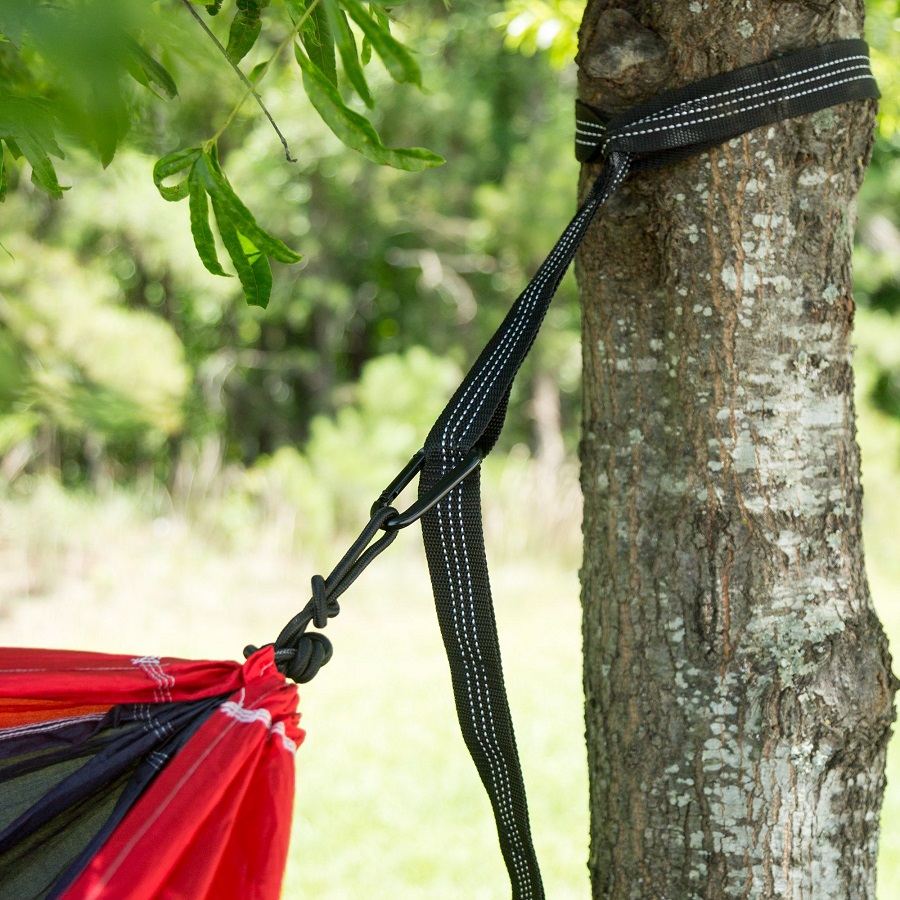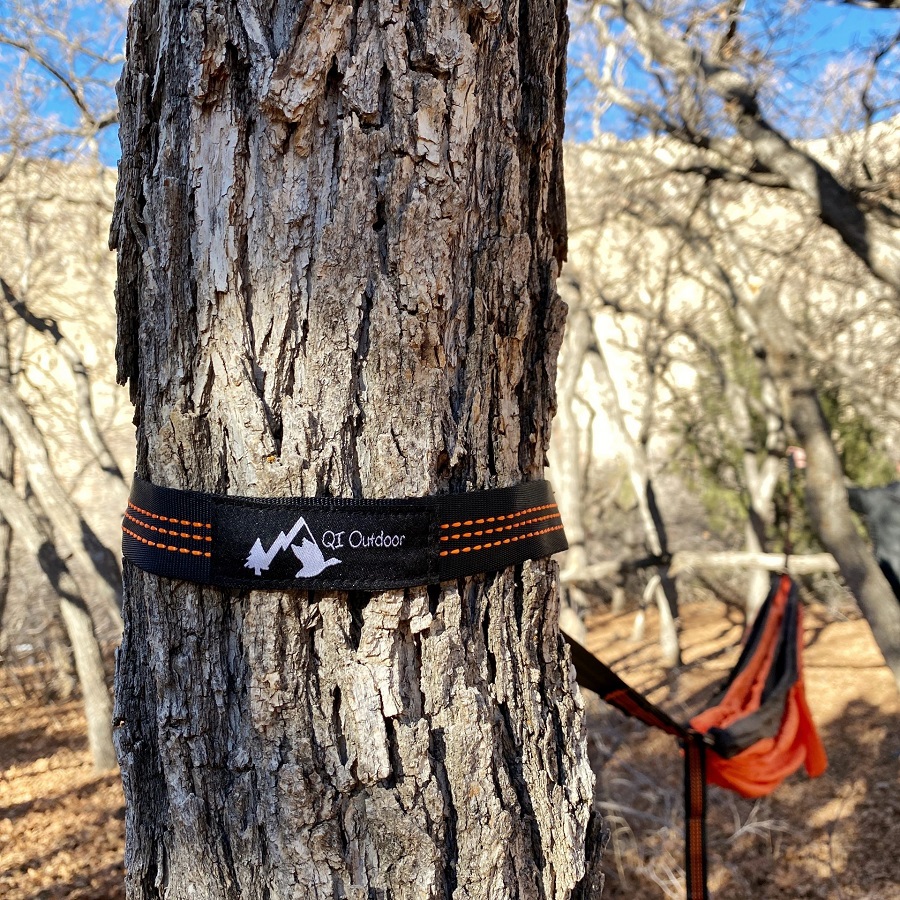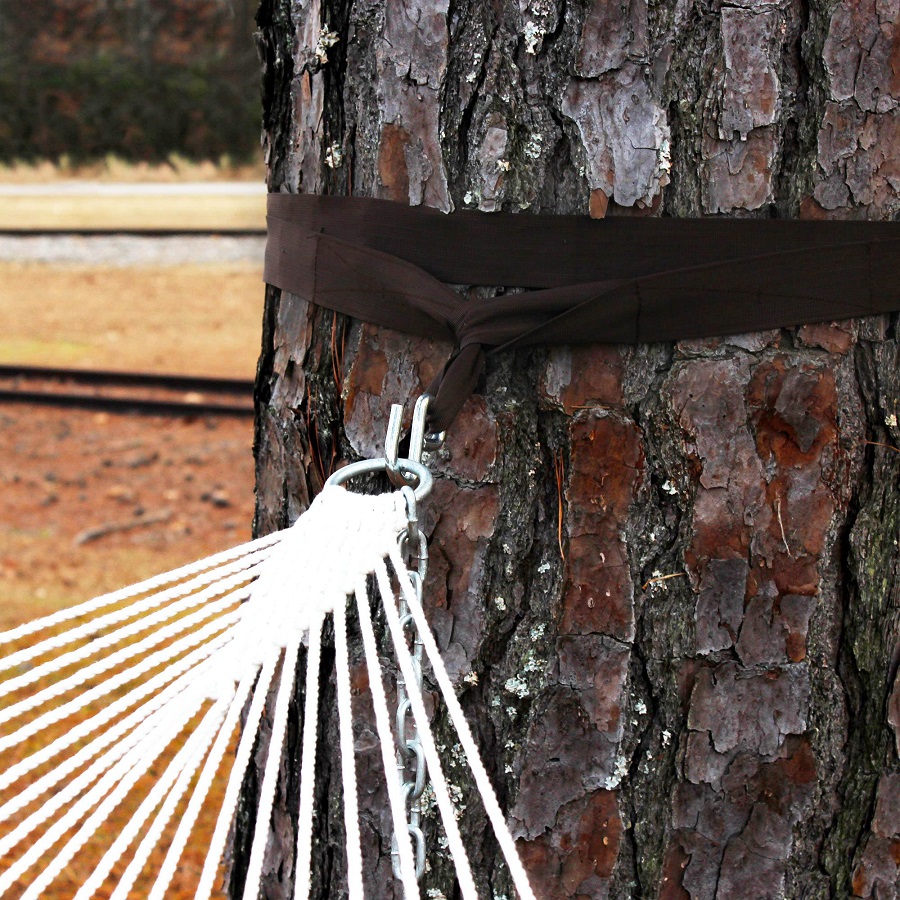Introduction to Hammock Straps
Embarking on an outdoor adventure? Hammocking offers a unique experience, blending comfort with nature.
Finding Suitable Anchor Points
To begin, locate two sturdy trees, approximately 10 to 15 feet apart. Ensure they’re strong enough to support your weight.
Attaching Straps to Trees
Wrap the straps around each tree, pulling tightly to secure. Remember, tree health is paramount; avoid damage when strapping.
Hanging the Hammock Safely
After attaching straps, use carabiners to connect the hammock. Ensure it’s at a comfortable height and angle for optimal relaxation.
Adjusting for Optimal Comfort & Tension
Adjust straps to achieve the desired sag and tension, aiming for a comfortable hammock dip.
Managing Strap Length and Hammock Sag
Keep strap ends and hammock edges off the ground. Aim for a moderate sag for a cozy lie-in.

Types of Hammock Straps
Choosing the right type of hammock straps is vital for your safety and comfort. There are various designs available to suit different preferences and hanging conditions.
Different Hammock Strap Designs and Their Uses
Different strap designs cater to varied needs. Double-loop straps are straightforward to use. Daisy chain straps offer adjustability with multiple loops. Loop-free straps require knot-tying skills but are flexible and inexpensive. Choose based on your expertise and setup needs.
Advantages of Tree-Friendly Straps
Using wide, tree-friendly straps protects trees from damage. They distribute weight evenly, reducing stress on tree bark. This keeps trees healthy and preserves natural areas for future enjoyment.
Considering Length and Weight Capacity
The length of your straps affects where you can hang your hammock. Longer straps offer more options but weigh more. Straps also have weight limits. Ensure straps can support your weight for a safe hammock experience.
The Importance of Proper Hammock Suspension
Proper hammock suspension is crucial for safety and comfort. It ensures that your hammock hangs secure without causing harm to trees or risk of personal injury. When done correctly, it provides peace of mind and enhances your outdoor relaxation experience.
Why Tree Health Matters When Hanging Hammocks
Tree health is key when you hang your hammock. Wide, tree-friendly straps help prevent tree bark damage. Damaged bark can expose trees to pests and diseases, affecting their growth. Healthy trees mean a sustainable environment for future hammocking adventures.
Ensuring Safety and Comfort
Safety and comfort go hand in hand with proper hammock suspension. Use the right straps to avoid falls and ensure your hammock is stable. Adjust tension to suit your comfort level. Good suspension means restful lounging in nature.
Step-by-Step Guide to Using Hammock Straps
Finding Suitable Anchor Points
To set up a hammock, you need two sturdy trees or anchors. Look for healthy trees about 10 to 15 feet apart. They should be strong enough to withstand the combined weight of the hammock and its occupant. Avoid trees that show signs of disease or weakness. Also, the trees should be a minimum of 6 inches in diameter for a secure anchor point. Check the surroundings; ensure there are no hazards like loose branches above.
Attaching Straps to Trees
First, loop one end of the strap around the tree at about eye level. Slide the other end through and pull to tighten. Do the same with the second strap on the other tree, making sure both straps are at the same height. Ensuring the straps are flat against the tree bark will minimize any potential damage. Eco-friendly hammock straps, which are broader, provide better weight distribution and prevent harm to the trees.
Hanging the Hammock Safely
Once the straps are securely in place, attach the hammock using carabiners or other provided attachments. Hook the hammock in the desired loop on the straps based on the distance between the trees. Adjust the height so that when sitting in the hammock, your feet can touch the ground. The ideal position should be such that the lowest part of the hammock is about 18 inches from the ground. Always inspect the hammock and straps for wear or damage before each use.

Fine-Tuning Your Hammock Setup
Getting your hammock set up just right is key to a great outdoor experience.
Adjusting for Optimal Comfort & Tension
To fine-tune your hammock’s comfort:
- Experiment with the strap’s loop choice to adjust the hammock’s height.
- Aim for a 30-degree angle between straps and trees for less tension.
- Adjust the hammock until it feels right; it shouldn’t sag too much or be too taut.
Managing Strap Length and Hammock Sag
Managing strap length and hammock sag is important for a good hang.
- Ensure the straps securely wrap around the trees at an even height.
- Your hammock should have a gentle sag to cradle your body comfortably.
- Leave a bit of slack in the straps to avoid excessive tension on the trees.
- The hammock should be low enough that you can sit and exit easily.
Hammock Strapping Tips and Best Practices
Selecting the Right Location
To ensure a great hammock experience, choose your location wisely. Look for flat, dry areas away from water paths or steep slopes. Ensure the area is clear of hazardous objects like rocks or sharp sticks. Keeping your hammock away from high-traffic paths is good for both privacy and safety. Above all, make sure hammock hanging is allowed in the area to avoid trouble.
Alternatives to Tree Hanging
If trees are sparse or you want to minimize your environmental impact, consider alternatives. Use hammock stands which provide the freedom to set up camp virtually anywhere. You can also use rock outcroppings or post setups if you have suitable equipment like portable anchors designed for hammock suspension. Always check that these alternatives can bear your weight and are stable before using.
Maintenance and Care for Your Straps
Caring for your hammock straps is crucial for long-lasting use. Clean your straps with mild soap and water to remove dirt and debris. Avoid bleach or strong chemicals that can weaken the fabric. After cleaning, let them dry completely before storing to prevent mold and mildew build-up. Inspect your straps regularly for signs of wear or damage, and replace as needed to ensure your safety.
Wrap Up and Additional Resources
Recap of Key Takeaways
In this guide, we delved into the art of hammock strapping. We explored different types of straps, the importance of selecting tree-friendly options, and how to adjust your setup for comfort. Understanding the correct way to use hammock straps is crucial for both safety and enjoyment. We emphasized the need to find sturdy anchor points and protect tree health. We also provided tips for selecting the right location, alternatives to tree hanging, and maintaining your straps for longevity.
Remember to always check straps for signs of wear before use. Choose wide, flat straps to minimize tree damage. Adjust the hammock sag for personal comfort, making sure it’s not too high or low. Hammock straps come in various designs, so select the one that fits your skill level and adventure style.

Further Reading and Where to Buy Straps
For more on hammocking, visit outdoor adventure blogs and websites. They offer deep dives into different hammocking experiences and gear reviews. Outdoor retailers and camping stores offer a range of hammock straps. Online marketplaces like Amazon also have a wide selection. Check product reviews and weight capacities when purchasing your straps. Ensure they’re compatible with your hammock and meet your hanging needs.
Happy hammocking! Embrace nature’s embrace securely and comfortably with the right hammock straps.
